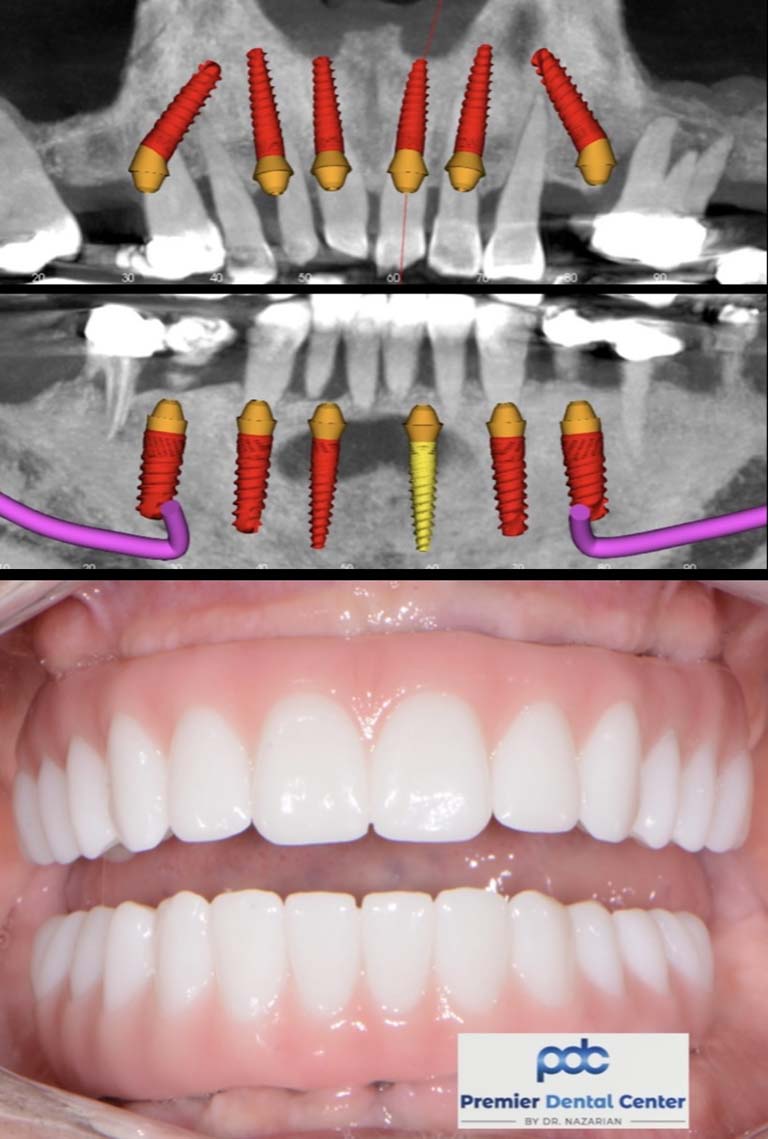The Basic Principles Of Dental Sense
Table of ContentsFascination About Dental SenseThe smart Trick of Dental Sense That Nobody is DiscussingThe Only Guide for Dental SenseTop Guidelines Of Dental Sense
are clinical gadgets surgically implanted into the jaw to bring back an individual's ability to chew or their appearance. They give assistance for fabricated (phony) teeth, such as crowns, bridges, or dentures. When a tooth is shed as a result of injury or condition, an individual can experience issues such as rapid bone loss, malfunctioning speech, or changes to chewing patterns that cause discomfort.Dental implant systems contain a dental implant body and oral implant abutment and might additionally consist of an abutment fixation screw. Dental veneers cost. The dental implant body is surgically put in the jawbone in area of the tooth's root. The dental implant joint is usually connected to the dental implant body by the abutment addiction screw and prolongs through gum tissues into the mouth to sustain the connected man-made teeth
Smoking may impact the recovery process and decrease the lasting success of the dental implant. The healing procedure for the implant body may take a number of months or longer, during which time you usually have a temporary joint in place of the tooth. the oral implant procedure: Carefully comply with the dental hygiene guidelines offered to you by your dental provider.
Getting The Dental Sense To Work
Implant failure can cause the need for another surgery to fix or replace the dental implant system. Brings back the ability to chew Brings back aesthetic look Assists maintain the jawbone from shrinking due to bone loss Protects the wellness of the surrounding bone and gums Helps keep adjacent (nearby) teeth secure Boosts top quality of life Damage to surrounding all-natural teeth during implant placement Injury to the surrounding tissues throughout surgical procedure, such as sinus perforation Injury during surgery (as an example, fracture of surrounding jawbone) Insufficient function, such as feeling like the teeth do not attack together typically A feeling that the tooth hangs or twisting in area arising from an abutment screw loosening Implant body failure (looseness of the implant body) because of systemic infection, which might be extra likely in clients with unchecked diabetes mellitus as a result of neighborhood infection in bone and gums supporting the dental implant body because of delayed healing, which might be a lot more most likely in individuals who smoke Difficulty cleaning up the gums around the implant, leading to poor oral health Without treatment periodontal disease Post-surgical tingling as a result of nerve impingement or damage Constantly alert healthcare companies and imaging service technicians that you have dental implants before any magnetic resonance imaging (MRI) or x-ray treatments.
FDA is not familiar with any type of damaging events reported for MRI or x-ray treatments with dental implants. Dental implants systems are commonly made from products that adhere to international agreement criteria of the International Organization for Standardization (ISO) or ASTM International. These standards have details of what makes a secure material.

A dental implant is a structure that changes a missing tooth. With screw-like devices, the surgeon inserts an implant right into the jawbone, and it works as a support for a synthetic tooth, called a crown. A gadget called an abutment attaches the fabricated tooth to the oral implant. The crown is tailor-made to fit the individual's mouth and match the shade of their teeth.
Dental Sense Fundamentals Explained
Some people are not eligible for oral implant surgical treatment. It is for oral cosmetic surgeons to operate on people with: acute illnessuncontrollable metabolic diseasebone or soft tissue disease or infectionIf these issues are solved, a person can have the surgical treatment. In, dental specialists avoid from running on people with: If people with any of the above go through dental implant surgery, there is a higher risk of the dental implant failing.

Dental implant surgical treatment is an individualized procedure. Provide you time to recover. Affix the blog post and last crown, bridge or denture.
Next off, your surgeon will very carefully put the oral implant right into your jaw. Finally, your surgeon will rearrange your gum tissues and close the laceration with stitches. If your dental implant is near the front of your mouth, your dentist will make a temporary tooth for you to wear until you heal. By doing this, you won't have a void in your smile while you recover.
Some Of Dental Sense
Throughout the recovery stage, your jawbone must fuse to the oral implant. This procedure can take anywhere from 3 to nine months.
Once your dental implant heals, your dental expert can connect the abutment (little port blog post) and your final remediation (crown, bridge or denture). This normally takes concerning one hour to complete and may call for a 2nd minor surgery. You shouldn't feel any pain throughout your oral implant treatment due to the fact that your copyright will make use of medication to numb your gums.
Comments on “Dental Sense Fundamentals Explained”